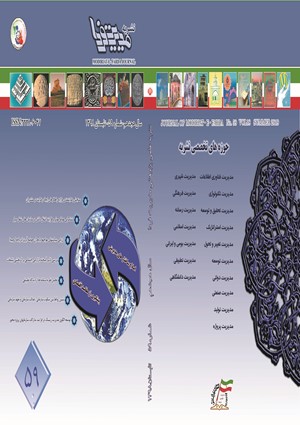طراحی الگوی اثربخش برای تعدیل تورم ساختاری اقتصاد
محورهای موضوعی : مدیریت تحقیق و توسعه
1 -
کلید واژه: تورم اقتصاد مقاومتی الگوی مفهومی ,
چکیده مقاله :
تورم پدیده منفی و یکی از معضلات عمده در اقتصاد است. بررسی روند گذشته نشان میدهد که اقتصاد ایران همواره از این مشکل رنج برده و تاکنون حل مسئله تورم در ایران موفقیت آمیز نبوده است.در شرایط فعلی که تحریمهای اقتصادی نیز بر ایران تحمیل شده است حل مشکل تورم راهکار ویژه ای نیاز دارد. تجربه تاریخی و روند گذشته نشان می دهد که برای حل تورم راهکارهای مرسوم و تجربه شده در کشور پاسخگو نمی باشد. این تحقیق با طراحی یک مدل مفهومی به دنبال راهکار جدید و متمایز از گذشته بوده و نشان داده است اجرای شدن سیاست های اقتصاد مقاومتی از طریق عملیاتی کردن مولفههای آن می تواند این معضل تاریخی اقتصاد ایران را تعدیل و بلکه برطرف سازد و به بیان دیگر حل مشکل تورم ساختاری با اجرای مولفه های اقتصاد مقاومتی است . چرا که اجرای مؤلفههای اقتصاد مقاومتی بر اساس سیاستهای کلی اقتصاد مقاومتی در نهایت منجر به انتقال منابع از فعالیت های غیر مولد و سفته بازی به فعالیتهای تولیدی می شود . با این تحول مثبت، بخش تولید رونق گرفته و در نتیجه تولید ناخالص داخلی از رشد فزاینده ای برخوردار خواهد شد و رشد تولید ناخالص داخلی کاهش تورم را به دنبال خواهد داشت. این روند با طراحی یک الگوی مفهومی تبیین شده است که داراي پشتوانه نظري و تئوريكي در اقتصاد كلان است.
Inflation is a negative phenomenon and one of the major problems in the economy. A review of the past trend shows that the Iranian economy has always suffered from this problem and so far the solution to the inflation problem in Iran has not been successful. In the current situation economic sanctions imposed on Iran, Solving the problem of inflation requires a special solution. Historical experience and past trends indicate that solving inflation in conventional and experienced solutions in the country are not responsive. This research focuses on designing a conceptual model looking for a new and distinct strategy and has shown the implementation of economic resistance policies through operational its components can solve this historical dilemma of the Iranian economy in other words adjusting and solving the problem of structural inflation by implementing the components of the resistance economy. Because the implementation of the components of the resistance economy based on the general policies of the resistance economy ultimately leads to the transfer of resources from non-productive activities and speculation to productive activities by this positive development, the manufacturing sector flourishes and, as a result, GDP will grow at a higher rate, and GDP growth Will reduces inflation. This process is explained by designing a conceptual model that has theoretical and theoretical support by the macroeconomics.


